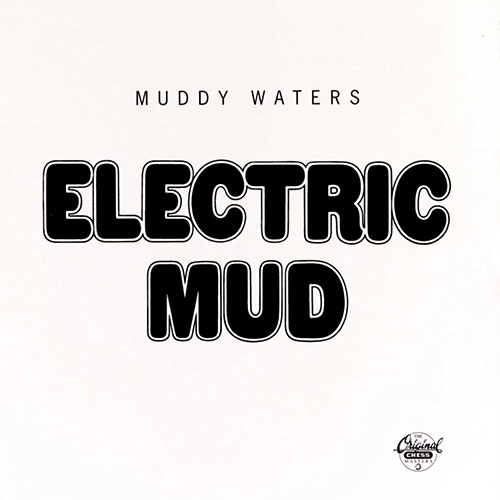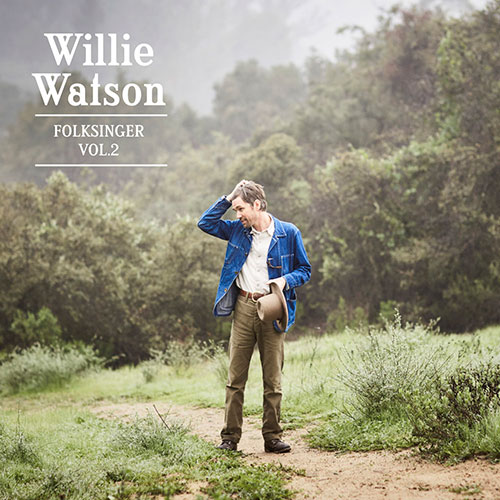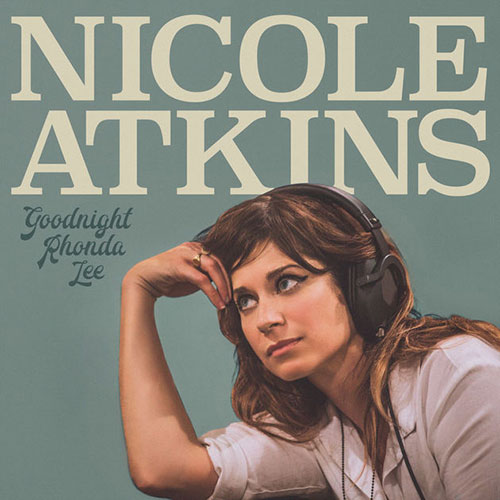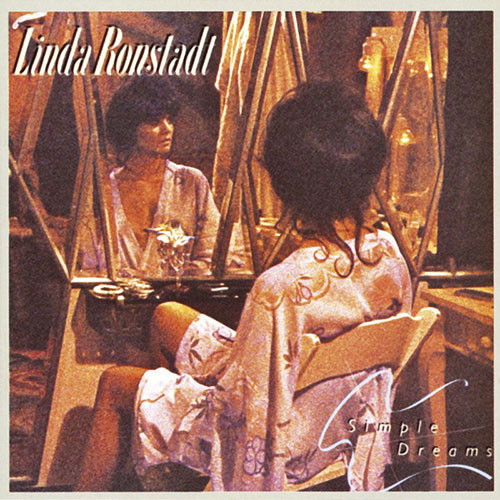
I had been tracking original copies of Muddy’s Electric Mud (from 1968) online for years without success due to the exorbitant asking prices for clean copies. So, I was excited to learn about the recent reissue by Third Man Records. Doubly so since it would be my first exposure to records pressed at their own Detroit facility. I’d long ago cancelled my subscription to Jack White’s Third Man Vault due to the inferior quality of their records, which at the time were pressed in Nashville. They consistently lacked luster. Things are looking up.
Secrets Sponsor
First things first: I was surprised by how much I enjoyed the content of this record when I first sought it out years ago. This was an “experimental” record with a psychedelic Rock band backing up the Blues Master. The gimmick worked, and may have provided a template for later releases by Fat Possum records – such as Burnside’s collaboration with the Jon Spencer Blues Explosion or his “dance music” records. In both instances, neither of the principle artists were at all impressed with the records themselves, but were introduced to a whole new demographic of fans that may otherwise have never heard their music at all. They appreciated the royalties. But I appreciate Electric Mud. In a weird way, it kinda predates sampling and “mashups” by a few decades. Muddy sings the lyrics to “Let’s Spend the Night Together” over a heavy groove that owes more to “Sunshine of Your Love” than to the original Stones recording. You can feel Hip-Hop’s DNA organizing itself in many of the drumbeats. Fans of bands like Deep Purple will appreciate the fuzz-tones and overall heaviness. Blues purists… probably won’t like it at all. The folks at Chess tried it another time with a Howlin’ Wolf record. This time, they advertised how little the Wolf thought of the record right on the album cover. It did not sell. But Electric Mud was Chess’s highest selling Muddy title. And the Fat Possum collaborations and weird dance records landed Burnside in TV commercials, on the Sopranos, and on the late night talk-show circuit. From the artists’ accountants’ perspective, lots of good came from this zany late-‘60s psychedelic thinking. And a couple of the records actually worked musically. Or parts of them did. Electric Mud sounds almost pedestrian today in comparison to how weird folks must have thought it was upon release. The music rocks and Muddy sings the Blues. Simple.
Third Man won’t tell you which sources were used for their reissues, but I’d bet the farm that this is far from an AAA release. We’re not dwelling in the audiophile’s world here. Or hear. The sonics are a little, um, “muddy,” but that’s not Third Man’s fault. They were that way when Third Man found them. The pressing, though, is much better than what they were getting from the Nashville folks, and I hope like hell that they remain consistent. This one’s worth having if you like Big Rock. Would have been worth it just for the poster of Muddy getting his hair done up.

Speaking of Muddy Waters, he released an acoustic album called Folksinger once. (Analogue Productions did a swinging version a while back that can still be had.) But we’re here to explore Willie Watson’s Folksinger Vol. 2, which was recently released on Gillian Welch’s and David Rawlings’s Acony label. They made a big ruckus last year in a Washington Post article about how the two purchased their own lathe to combat the lack of quality and attention to detail by today’s vinyl manufacturing concerns. To the best of my knowledge, this is their third vinyl release. They’ve all been mostly great, but this one is special. It is a no-brainer for folks who enjoy the O Brother, Where Art Thou soundtrack and that type of music, in general. Willie Watson has got his thing together, y’all. Don’t doubt me on this one.
Secrets Sponsor
I’ll start this off by saying there’s a version of “Gallow’s Pole” on here that slays me. There’s a woodwind ensemble on it that sounds so eerie and sneaky that I wouldn’t know what instruments were involved just by listening. According to the liners, they were oboe, English horn, bassoon, and clarinet. Put them all together and they sound like a pump organ or something. At least on this song. The Fairfield Four also helps with some vocals on a few tunes, most notably on the cover of Furry Lewis’s “On the Road Again.” And the recording and presentation is so lifelike and present that you feel like you should bust out the fine china and top shelf liquors for your houseguests. But Watson handles the bulk of the heavy lifting by himself. He sings the songs in the voice of a 65 year old coal miner from the Appalachian Hills when, in fact, he is about 38 and from New York. Whatever. I’ve not heard this brand of music played with this level of authenticity on a new record in some time. The material would fit in just fine next to the stuff on my Folk Box reissue that I picked up on Record Store Day a few years back. Watson is a former member of the Old Crow Medicine Show, which makes me think that maybe I should circle back and check out some of what they do. Seems like they got their start standing on street corners asking for dollars before being discovered that way by Doc Watson himself. If everyone in that band were as musically accomplished as Watson is, I’d imagine that band sounds just fine. And if Watson’s Folksinger Vol. 1 is anywhere near as great as Vol. 2, I’ll start clamoring for a vinyl release forthwith. I’m not as familiar with the song titles on that one as I am on the more recent release. This one has a version of “John Henry” and “Samson and Delilah” in addition to the previously mentioned titles. There’s even a version of “Walking Boss” that rivals the Jerry Garcia/David Grisman version that I love so much on their self-titled collaboration. It smokes.
The sonics on this record are explosive. So much transparency and three dimensionality to luxuriate in. The acoustic instrumentation really comes across and gives the listener the “in the room” experience that the audiophiles are all after. There’s a download code included. This record is where it’s at. I’d advise you to get one now.

Sounds like I partied with Nicole Atkins once in a North Carolina hotel room after a Widespread Panic show sometime around the turn of the century. I hear that I was enamored of her. I always meant to circle back and check out some of her records, and, with the release of Goodnight Rhonda Lee, that time is now. Ironically, this is her first record since getting sober. Some of that makes it into the songs, but the themes that jump out at me are mostly around heartbreak, getting over heartbreak, starting over, and moving on. Rhonda Lee (Atkins’s nickname for her drunken alter ego) is a fun listen. I hope Ms. Atkins is happy with it. I would be.
The first tune on Rhonda is called “A Little Crazy.” It’s huge. The Roy Orbison influence is hard to miss, and that clearly makes for good listening in capable hands. And Atkins is fiercely competent as a vocalist. Lots of range, and even more power. She gets gravelly, she smoothes sounds out, and she wails and croons. The musical flavors in this gumbo are equally diverse, but they all coalesce into a coherent whole so that the entire album seems like a sonic revue, similar to what one might have seen on the live R ’n B circuit in the ‘60s or something. There’s an expansive instrumental lineup to sort through on Rhonda, and seemingly, disparate sounds are often thrown in the pot to meld together with surprisingly fresh results. I mean, we’re not reinventing the recipe here. Certainly, Pop songs have been recorded with fiddles and horn sections together before. (In fact, I can think of another New Jersey native who utilized the configuration on his album of outtakes from Darkness On The Edge of Town a few years back.) But that doesn’t mean that the combinations aren’t brave or that they didn’t require some work to get the sound right. I don’t know that they did or that they didn’t, but this is obviously a well-conceived production that could have flown off the rails in less capable hands. There are full on string and horn arrangements that Atkins handled herself. There are echo-y vibraphone-type sounds that advance the ‘50s vibe. There’s a sneaky pedal steel that floats across the canvas like a benevolent ghost at times. Full-throated backup singers that might have fit in on a Delaney and Bonnie tour. Ballads and ravers. Peaks and valleys. You get the idea. I’ve read that Atkins endeavored to break out of the Indie-Rock mold for this record as a departure from previous efforts. I have no frame for comparison, but if this is what it sounds like while Atkins finds her true sound, then I imagine we have a lot to look forward to. To me, Atkins has most of the power of someone like Christina Aguilera, but much more taste. I’ll take that tradeoff all day.
This is a high quality affair for an artist that likely didn’t have a ton of financial backing for a primetime vinyl release. Songs were recorded to tape, but this is almost certainly not an AAA production. Pressing is good. Download card included. There’s a picture of Atkins and someone who appears to be Tom Cruise in the gatefold. Looks like she’s giving him a friendly warning. Maybe she was about to start peeling the paint off the walls. With her voice.

Speaking of badass female vocalists saluting Roy Orbison, Linda Ronstadt released Simple Dreams in 1977 and sold 8 gazillion copies of it largely on the strength of her cover of Orbison’s “Blue Bayou.” Mobile Fidelity has been reissuing some of her more popular titles over the last couple of years, and I’ve had my eye on them for a while. I finally decided to see what all the fuss was about this month. I’m still a little unclear…
Of all the hit songs on Simple Dreams, I was most familiar with the Buddy Holly cover, “its So Easy.” Not sure where I picked it up as I was all of three years old when it was released, but I was probably more familiar with her take than the original. (I’m not much of a Buddy Holly fan. Yet?) Upon further inspection, I realized that the song hasn’t held up as well as I might have hoped. I mean, it’s groovy. Especially the “it’s so easy” part with the background harmony vocals. But it’s too clean and sterile for my ears. And that’s true of the entire album, really. Similar to some of Springsteen’s more famous works, I’d love to hear a complete do-over on this whole album. Let a little ambient noise in. Take that frigging shag carpet off the floors and the walls and the ceiling, and get some life into the room. But that’s the ‘70s, right? We took an okay idea (separation of sounds), decided it was the ideal, and then rushed to get as much blood from the rock as possible without ever stopping to really notice if all of this “improvement” was serving its intended purpose. To my ears, “clean sound” often equates to “dead sound.” We’re not quite there with Simple Dreams, but it sounds like most of the air was sucked out of the room during recording, certainly. I chose this title specifically because it had a couple of other covers on it that I wanted to check out – Zevon’s “Carmelita” and the Stones’ “Tumbling Dice” mostly. Both are fun, neither is transcendent. I blame the sonics.
But here’s the thing: these types of records (Brothers and Sisters by the Allman Bros., and multiple Elvis Costello titles) are perfect for the MoFi aesthetic. Or the former MoFi aesthetic. (They can absolutely also Rock now.) MoFi really shines on these types of records, maybe because their backgrounds are so flat black that listeners can easily appreciate all of these strictly separated sounds in their individual glory. But it feels more like a mosaic than a melting pot. Take all of this with a grain of salt. These quasi-gripes are certainly a function of my personal sonic tastes. Dyed in the wool audiophiles might aspire to this very sound, whereas I believe that one can have a more lively presentation that still belongs in the audiophile arena. Regardless, Linda Ronstadt sold over 3 million copies of this “sterile” recording. In my face. Her voice is phenomenal, the songs are tasty, and members of the Eagles are scarcely involved at all (unlike on her earlier recordings). There’s much to recommend. I’d just like to hear these songs get a little mud between their collective toes. One day…
(This record was purchased at MusicDirect.com.)

Looks like Thelonious Monk was commissioned to score the film Les Liaisons Dangereuses in the late ‘50s in part due to the success of similar adventures undertaken by Miles Davis at around the same time. Monk was not in especially great shape at the moment, as the first hints of mental illness were making themselves more obvious while Monk’s workload had increased exponentially after not having been able to work in NYC due to trumped up legal issues that were often an unfortunate aspect of the African-American experience of the era. The original session tapes were discovered recently after being AWOL for generations. Seems like there was a glut of those types of occurrences over the last decade plus. This is the second such instance of a Monk discovery that I can think of off the top of my head, and it seems like old Zeppelin tapes are discovered every few years for release. I’m a fan of Monk’s playing, but I can’t speak with any authority on the details of his catalogue. My ears are happy with this discovery though. I hope there are hidden tapes to be discovered for millennia to come if this is how it’s going to be.
Due to Monk’s deteriorating condition, no new music was composed for this score. The sessions were to take place in France, but there were a variety of complications so the album was recorded at the last possible second over the course of a few short days in NYC. Most of the songs had been previously released, but Monk fiddled with the tempos and arrangements to accommodate the film’s action. Apparently, the tunes are well known to Monk enthusiasts, but “Crepuscule with Nellie” is the only one that I have on a previous release. Ironically, it’s on another “found miracle” recorded at Carnegie Hall in 1957 and released in 2005. The difference between the two releases is that the Carnegie concert is more or less a glorified (and glorious) bootleg, while the film recordings are absolutely restaurant quality. It’s not as if anyone had been handling them or wearing them out, no one even knew where they were. Again, I’m no expert. True to the bone Monk fans might consider this material to be filler or somehow inferior to his more official releases. I just hear great Jazz that was meticulously recorded. I mean, the rhythm section includes Sam Jones on bass and Art Taylor on drums, for crying out loud. The music is mellow, and perfect for both background and focused listening. The single disc was pressed at Quality Record Pressings, and they did a fine job. I wasn’t too impressed with some of their earlier work, but things are humming along nicely now. There was an expanded, expensive version of this set released for Record Store Day way back in 2017. It had an extra disc with alternate takes along with expanded liners and photos. I feel like I made the right choice. I don’t need the extras. Monk fanatics might though. I’d imagine these are exciting times for them. I’ll get a lot of mileage out of this one. Highly recommended.
(This record was purchased at MusicDirect.com.)



